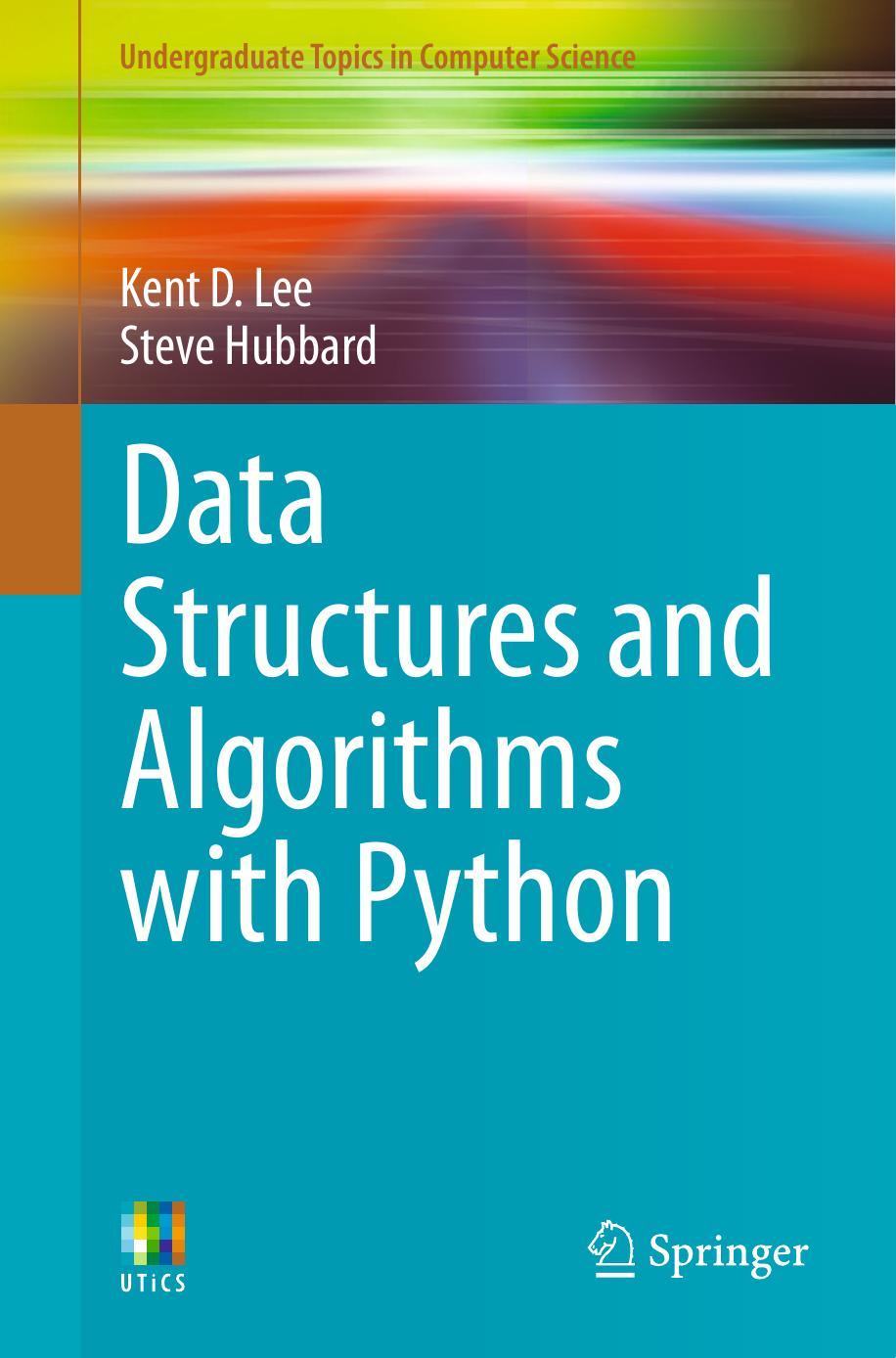Data Structures and Algorithms with Python by Kent D. Lee & Steve Hubbard

Author:Kent D. Lee & Steve Hubbard
Language: eng
Format: epub, pdf
Publisher: Springer International Publishing, Cham
5.8.1 A Memoized Fibonacci Function
The memoized fib function in Sect. 5.8.1 records any value returned by the function in its memo. The memo variable is accessed from the enclosing scope. The memo is not created locally because we want it to persist from one call of fib to the next. Each time fib is called with a new value of n the answer is recorded in the memo. When fib(n) is called a subsequent time for some n, the memoized result is looked up and returned. The result: the memoized fib function now has O(n) complexity and it can compute fib(100) almost instantly. Without memoization, it would take 1,146,295,688,027,634,168,201 calls to the fib function to compute fib(100). Assuming each function call completed in 10 microseconds, it would take roughly 363 million years to compute fib(100). With memoization it takes 100 calls to fib and assuming 10 microseconds per call, that’s 1000 microseconds or 1/1000 of a second.
This is an extreme example of the benefit of memoization, but it can come in handy in many situations. For instance, in the tic tac toe problem of Chap. 4 the minimax function is called on many boards that are identical. The minimax function does not care if an X is placed in the upper-right corner first followed by the lower-left corner or vice-versa. Yet, the way minimax is written it will be called to compute the value of the same board multiple times. Memoizing minimax speeds up the playing of tic tac toe.
Download
Data Structures and Algorithms with Python by Kent D. Lee & Steve Hubbard.pdf
This site does not store any files on its server. We only index and link to content provided by other sites. Please contact the content providers to delete copyright contents if any and email us, we'll remove relevant links or contents immediately.
| Access | Data Mining |
| Data Modeling & Design | Data Processing |
| Data Warehousing | MySQL |
| Oracle | Other Databases |
| Relational Databases | SQL |
Algorithms of the Intelligent Web by Haralambos Marmanis;Dmitry Babenko(16234)
Azure Data and AI Architect Handbook by Olivier Mertens & Breght Van Baelen(7674)
Building Statistical Models in Python by Huy Hoang Nguyen & Paul N Adams & Stuart J Miller(7655)
Serverless Machine Learning with Amazon Redshift ML by Debu Panda & Phil Bates & Bhanu Pittampally & Sumeet Joshi(7529)
Driving Data Quality with Data Contracts by Andrew Jones(7292)
Data Wrangling on AWS by Navnit Shukla | Sankar M | Sam Palani(7290)
Machine Learning Model Serving Patterns and Best Practices by Md Johirul Islam(7028)
Learning SQL by Alan Beaulieu(6236)
Weapons of Math Destruction by Cathy O'Neil(6213)
Big Data Analysis with Python by Ivan Marin(5931)
Data Engineering with dbt by Roberto Zagni(4929)
Solidity Programming Essentials by Ritesh Modi(4564)
Time Series Analysis with Python Cookbook by Tarek A. Atwan(4399)
Pandas Cookbook by Theodore Petrou(4086)
Blockchain Basics by Daniel Drescher(3537)
Natural Language Processing with Java Cookbook by Richard M. Reese(3141)
Hands-On Machine Learning for Algorithmic Trading by Stefan Jansen(3041)
Learn T-SQL Querying by Pam Lahoud & Pedro Lopes(2929)
Feature Store for Machine Learning by Jayanth Kumar M J(2923)
